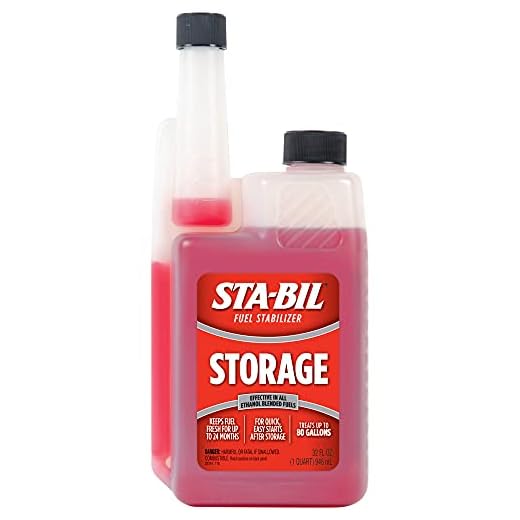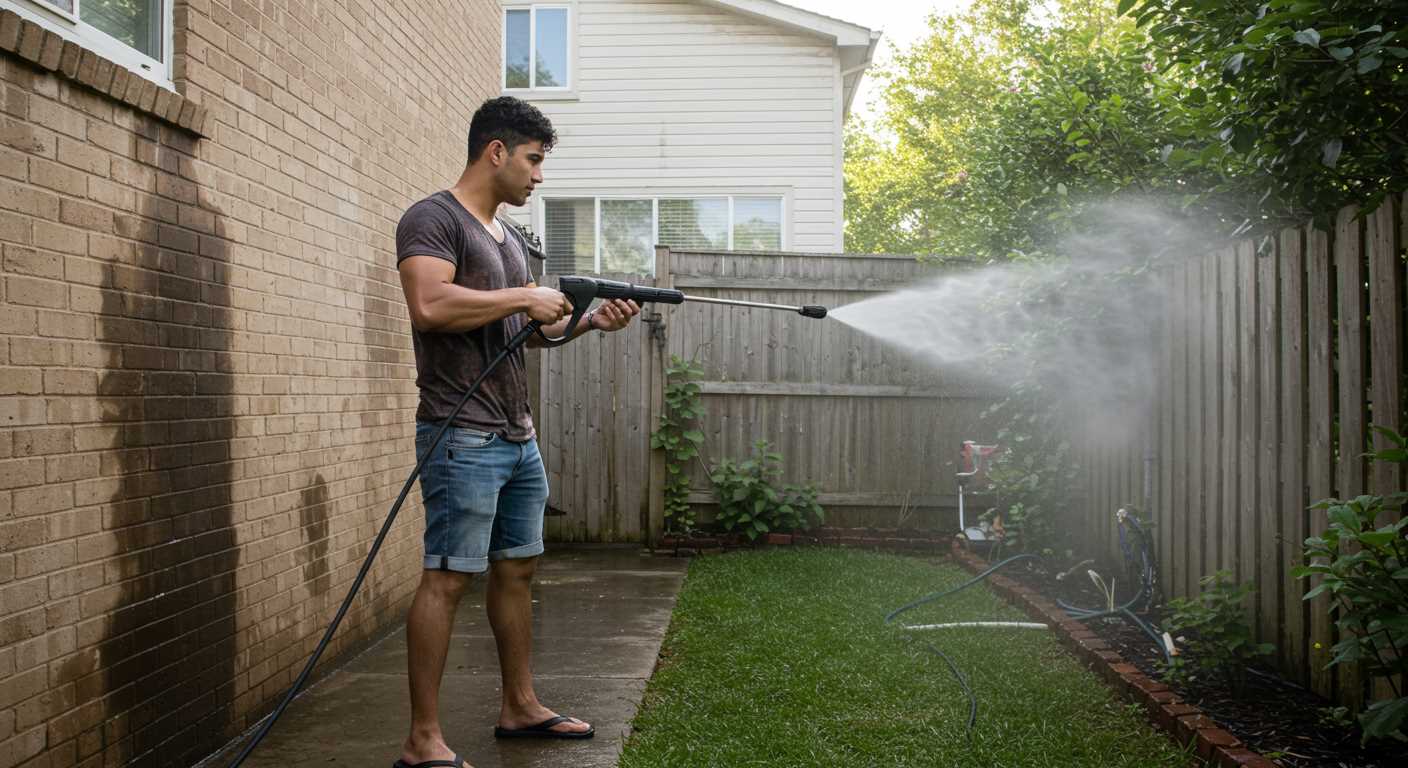



Identify fuel quality as a primary factor contributing to misfires during operation. Using stale or low-grade fuel can lead to incomplete combustion, resulting in undesirable events. Always utilise fresh, high-octane fuel to maintain optimal performance.
Examine the ignition system regularly. Faulty spark plugs or ignition coils can lead to irregular firing sequences, causing backfiring sounds. Replace worn spark plugs and ensure connections are secure for reliable ignition.
Consider air filters and carburettors as essential components. A dirty air filter restricts airflow, affecting the fuel-air mixture and potentially leading to backfires. Regularly inspect and clean or replace filters to avoid blockages. Additionally, adjustments to the carburettor settings may be necessary for precise fuel supply.
Check for any exhaust leaks. Damaged or loose exhaust components can alter pressure dynamics within the system, causing a reversal of gases. Conduct a thorough examination of the exhaust system to secure all connections and replace any defective parts.
Factors Leading to Misfiring in High-Pressure Cleaners

Addressing sudden misfires in high-pressure cleaners involves checking several mechanical aspects. Start by inspecting the fuel system. A clogged fuel filter can restrict flow, causing the engine to struggle. Regular replacement of the fuel filter is advisable to ensure uninterrupted operation.
Inspecting the Ignition System
The ignition components must be functional. A malfunctioning spark plug will prevent proper ignition, leading to erratic performance. I recommend replacing spark plugs at intervals specified in the user manual, typically after every 100 hours of use. Additionally, verify that the ignition coil is delivering adequate voltage; a multimeter can provide a quick assessment of its condition.
Examining the Air-Fuel Mixture
An improper balance of air and fuel can lead to misfiring. If the air filter is dirty, it restricts airflow, resulting in a rich mixture. Cleaning or replacing the air filter as needed will help achieve optimal combustion. Adjusting the carburettor settings may also be necessary for models equipped with adjustable systems.
| Component | Recommended Action |
|---|---|
| Fuel Filter | Replace regularly |
| Spark Plug | Inspect and change every 100 hours |
| Air Filter | Clean or replace as needed |
| Carburettor Settings | Adjust as necessary |
Furthermore, examine for any leaks in the fuel lines. Even minor leaks can compromise the fuel delivery system and lead to performance issues. Tightening connections and replacing damaged hoses can rectify this problem effectively.
Faulty Fuel Mixture and Its Impact
A defective fuel mixture can significantly disrupt the operation of your machine, leading to issues such as premature failure and reduced performance. It is crucial to maintain the correct ratio of fuel to oil, as an improper blend can lead to malfunctions. I always recommend a 50:1 ratio for two-stroke engines, but checking the manufacturer’s guidance is essential. Using fuel that has been sitting for too long can also contribute to combustion problems; fresh fuel optimises engine function.
Signs of an Incorrect Fuel Blend
You might notice rough idling, difficulty starting, or excessive smoke emissions. These are clear indicators that the fuel composition may be off. Always check for deposits in the fuel filter or spark plug, as these can signify that unburnt fuel is accumulating. If you’re experiencing these problems, consider draining the fuel tank and refilling it with a properly mixed solution.
Preventative Measures
Regular maintenance is key to avoiding complications arising from fuel mixtures. Store fuel in approved containers, and ensure it has a stabiliser if you’re not using it immediately. Keeping the machinery clean and regularly checking the fuel system can prevent build-up and ingestion of contaminants. Finally, I cannot stress enough the importance of using quality fuel. Cheaper options can lead to a multitude of issues down the line.
Clogged Fuel Filters and Their Role
Address fuel filter maintenance regularly. A blocked filter restricts the flow of fuel, which can lead to inconsistent engine performance. If the filter traps debris, the engine may not receive the optimal amount of fuel needed for combustion, causing operational irregularities.
Signs of a Clogged Fuel Filter
Look out for signs indicating a blocked filter. If the unit struggles to start, hesitates during operation, or exhibits a rough idle, it could signal fuel delivery issues. Additionally, frequent stalling or a decrease in power when under load can also point to this problem.
Maintenance Tips
Regularly inspect and replace the fuel filter as part of routine upkeep. Consult the manufacturer’s guidelines for replacement intervals. Ensure you use the correct type of filter; using an incompatible component can lead to further issues, compromising the equipment’s efficiency. Clean the fuel system to prevent sediment buildup. Keeping the system in good condition will enhance performance and reduce the likelihood of operational disruptions.
Ignition Problems Leading to Backfiring
Faulty ignition components often result in operational issues, such as unexpected combustion. A damaged spark plug is a common culprit; it may fail to create a sufficient spark, leading to incomplete combustion and potential backfiring. Regular inspection and timely replacement are advisable to prevent such malfunctions.
Another significant aspect is the ignition coil. If this part is malfunctioning, it won’t produce the necessary voltage for reliable ignition, which can lead to erratic engine performance. Testing the coil with a multimeter helps identify any issues before they escalate.
Worn or damaged wiring in the ignition system can disrupt the spark delivery. Regularly examine the wiring for any signs of wear or corrosion, ensuring all connections remain secure. Addressing these concerns early can avoid more extensive damage and costly repairs.
Timing also plays a critical role; if the ignition timing is off, it may lead to premature or delayed firing within the combustion chamber. Using the manufacturer’s specifications to verify and adjust timing can mitigate this risk.
In summary, focusing on the ignition components–spark plugs, ignition coils, wiring, and timing–is essential for maintaining optimal performance and preventing operational disruptions. Regular maintenance checks can save time and frustration down the line.
Worn Out Spark Plugs and Their Effects
Replace worn-out spark plugs immediately to improve engine performance and prevent misfires. Old or damaged plugs can lead to incomplete combustion, creating back pressure that may result in operational issues.
Consider these key indicators of spark plug deterioration:
- Visual Wear: Inspect for carbon build-up or erosion on the electrode.
- Engine Performance: Noticeable drop in power or efficiency despite normal fuel levels can signal a spark plug issue.
- Starting Difficulties: Troubles starting the unit or inconsistent ignition can stem from faulty plugs.
In my experience, when spark plugs reach their end of life, consider these best practices:
- Regular inspection and maintenance schedule–aim for every 50 hours of use.
- Replace plugs with those that meet OEM specifications to ensure compatibility.
- Use an anti-seize compound on the threads to prevent sticking during future replacements.
By following these recommendations, you significantly reduce the likelihood of starting issues and enhance overall performance. Regularly replacing spark plugs ensures smoother operation and helps avoid more serious engine problems down the line.
Air Filter Blockages and Performance Issues
Regular inspection and cleaning of the air filter are critical to maintaining optimal functionality. A dirty or clogged air filter restricts airflow, leading to improper fuel combustion and, consequently, irregular engine performance.
When the air supply is compromised, the engine may experience a lean condition, resulting in backfiring during operation. Regular maintenance can prevent these issues. I recommend checking the air filter every few months, especially if you’ve been using the equipment in dusty or outdoor environments. If you notice excessive dirt or damage, replace the filter immediately to restore airflow and ensure proper engine management.
Symptoms of an Obstructed Filter
Be vigilant for signs indicating an obstructed filter. Symptoms may include poor acceleration, stalling, or an unusual noise from the engine. If you encounter these issues, inspect the air filter first as it can be a straightforward solution to restore performance. Clearing any blockages can enhance the air-fuel mixture, promoting efficient combustion and reducing the risk of ignition problems.
Maintenance Tips
To optimise performance, consider these tips: use a pre-filter in extremely dusty conditions, perform routine checks, and clean or replace the filter as per the manufacturer’s recommendations. An unobstructed air filter not only safeguards the engine but also prolongs the lifespan of your cleaning equipment.
Incorrectly Set Carburettor Adjustments
Ensure that the carburettor adjustments are precise to prevent operational failures. An incorrect air-fuel mixture stemming from an improperly calibrated carburettor can lead to erratic engine behaviour. Regularly check the idle speed and mixture screws; a too-rich mixture often results in incomplete combustion, causing noticeable backfires.
Diagnosing Carburettor Issues

To evaluate carburettor settings, observe the engine’s response during operation. If it hesitates or backfires during acceleration, adjustments are necessary. Start with the idle mixture screw; turning it clockwise leans the mixture, while counter-clockwise enriches it. Small adjustments can significantly impact performance.
Maintaining Optimised Performance

Cleaning the carburettor periodically ensures it operates efficiently. Old fuel can leave deposits that interfere with the jets, leading to inconsistent mixtures. If issues persist after adjustments, consider replacing gaskets and seals for better integrity. Maintaining clean components is vital for consistent performance.
The Importance of Regular Maintenance Checks
Conducting regular maintenance checks significantly reduces the likelihood of combustion irregularities. Establish a routine schedule to inspect components thoroughly, ensuring optimal performance.
Key Areas to Focus On

- Fuel System: Regularly inspect fuel filters and lines. Replace filters as needed to prevent clogs that inhibit fuel flow.
- Ignition Components: Check the ignition system, including spark plugs and wires. Replace worn-out components to ensure robust ignition.
- Air Intake: Clean or replace air filters to avoid blockages that restrict airflow, affecting combustion efficiency.
- Carburettor Settings: Verify that the carburettor is calibrated correctly. Adjustments may be necessary to maintain the ideal fuel-air mixture.
Maintenance Frequency Recommendations
- Inspect fuel filters and air filters every 25 operating hours.
- Change spark plugs annually, or after every 100 hours of use.
- Perform a thorough check of the ignition system twice a year.
- Calibrate carburettor settings once a year or if performance issues arise.
Staying proactive with these checks ensures reliable operation and prolongs the lifespan of your equipment, minimising costly repairs and service disruptions.









